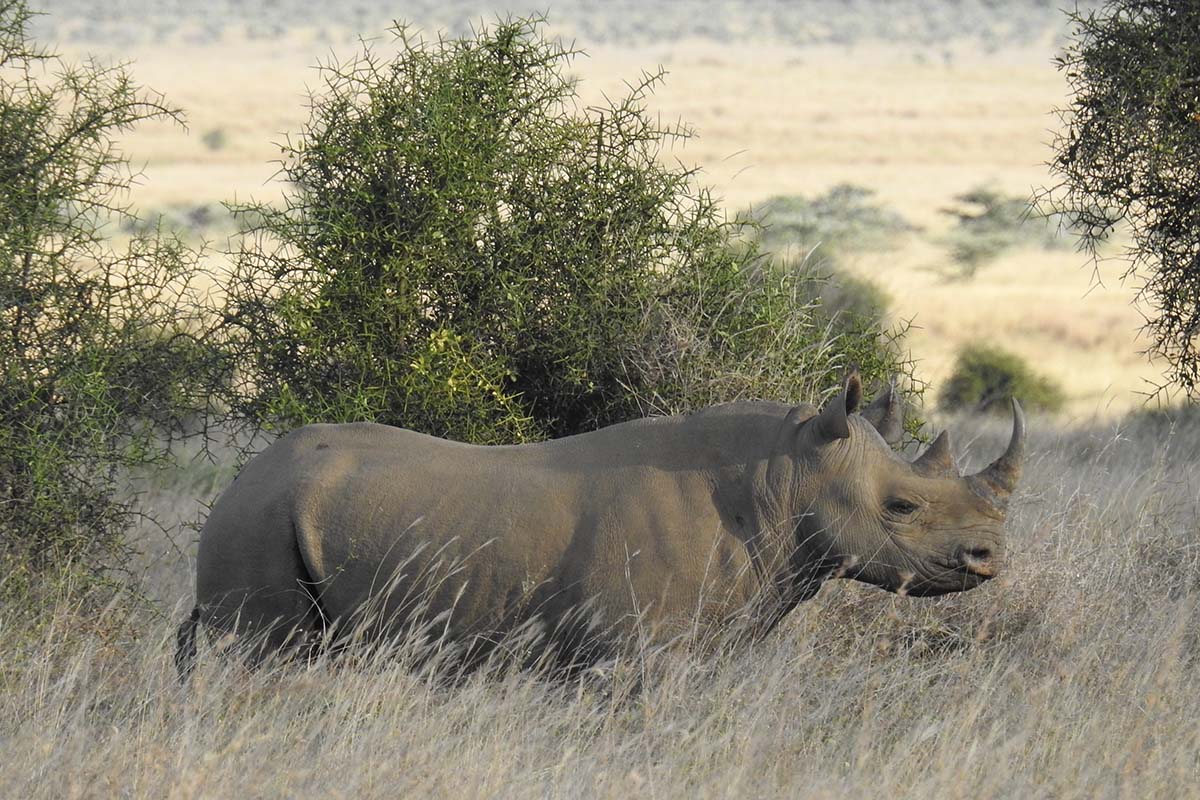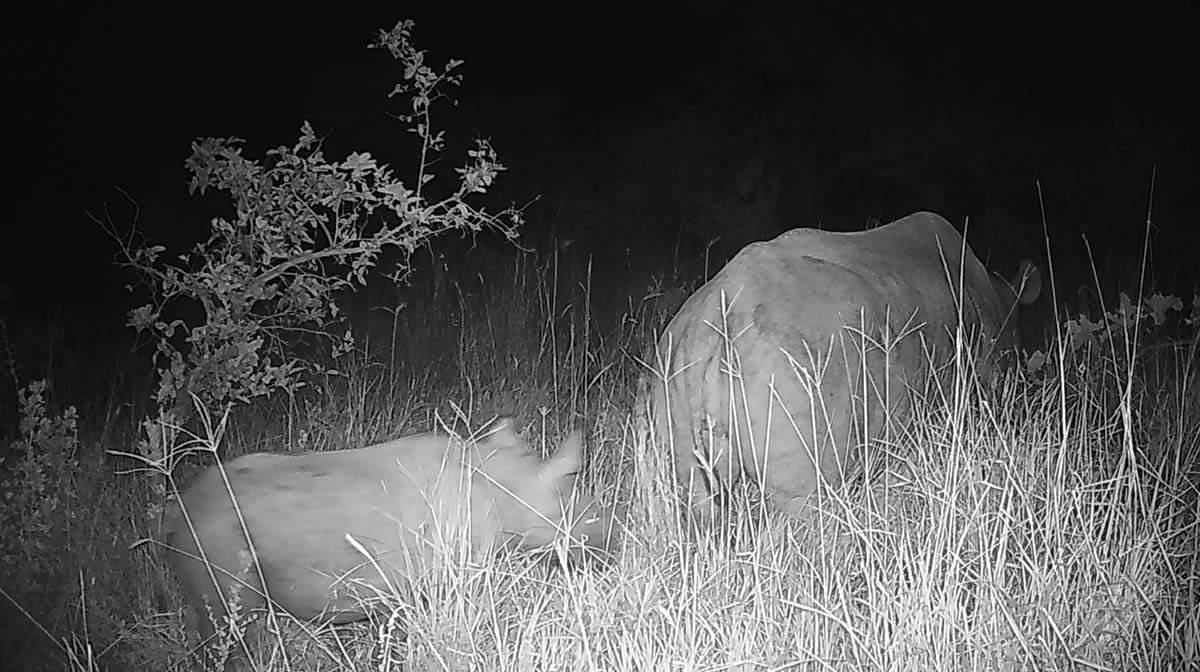
By Leslie Katz
Conservationists in Kenya recently had major reason to rejoice when they spotted a critically endangered baby rhinoceros alive in the wild months after they’d last seen the tyke.
Rangers in the remote, densely forested Chyulu Hills National Park first suspected an Eastern black rhino had been born when they discovered small animal tracks alongside a set of adult rhino prints in October. Hoping for proof, they set up nearby camera traps, which use infrared sensors to detect moving objects, such as animals. Within a month, they had video of the calf lumbering through the hilly brush with its mother.
“Then the signs dried up, and weeks went by,” Big Life Foundation, which works to protect African wildlife, shared in a March post. “It wasn’t necessarily bad news, but it was concerning. So imagine our excitement in spotting it on camera again: bigger and still very much alive.” Young rhinos face threats including illness and predators, so every day that they survive to become stronger and more familiar with their surroundings increases their chances of making it to adulthood.
The second round of footage indicated that “the calf is growing well,” Jeremy Goss, head of conservation science and communication for Big Life Foundation, said in a Zoom interview from Kenya. The mother, too, appeared to be in good condition. “That’s generally a strong indication of the calf’s chances of success,” Goss said.

The calf’s birth marked a significant and rare event given the small size of the Eastern black rhino population—a bit more than a thousand live in the wild, according to Big Life Foundation. The new calf, which increases the Chyulu Hills resident rhino population from seven to eight, is thought to be about 6 months old, though its gender has yet to be determined as it’s so far only been seen on video.
“Given the lack of high-quality images and frequency of sightings, it’s not a simple population to monitor,” Goss said, adding that years can pass without an Eastern black rhino being spotted in monitored areas.
Big Life Foundation works on the ground in Africa, together with Kenya Wildlife Service, to safeguard wildlife in over 1.6 million acres of wilderness in the Amboseli ecosystem. This area in southern Kenya spans more than 3,000 square miles and houses species East Africa is known for, including the Eastern black rhino. The animals can be found primarily in Kenya, but also in Tanzania and Rwanda.
“They can be equal parts intimidating and intriguing,” Goss said of the creatures.
The population of Eastern black rhinos declined dramatically in the 1970s and 1980s, going from 14,231 to fewer than 400 before increasing to 1,002 in 2017 due to conservation efforts, according to the World Land Trust, an international conservation charity. Habitat loss initially caused the decline, but illegal poaching remains the biggest peril.
The demand for rhino horns, typically sold on the black market for medicines and ornaments, has led to 95% of Africa’s rhinos being wiped out by poaching, according to the Chester Zoo in England. The zoo is part of an effort to transport Eastern black rhinos born in European zoos to their natural habitats in Africa. Last year, Chester zookeepers filmed one being born, a remarkable sight that marked a crucial milestone in efforts to preserve the species.
“There are so few of them left,” Goss said. “A single animal is an important contribution to the population.”
Original Article on Forbes.com.
Learn more about Big Life's Rhino Protection Program.
